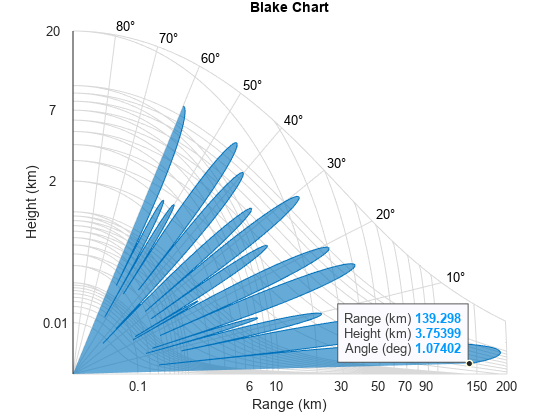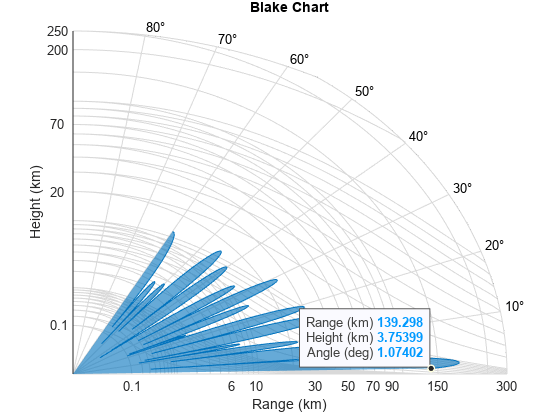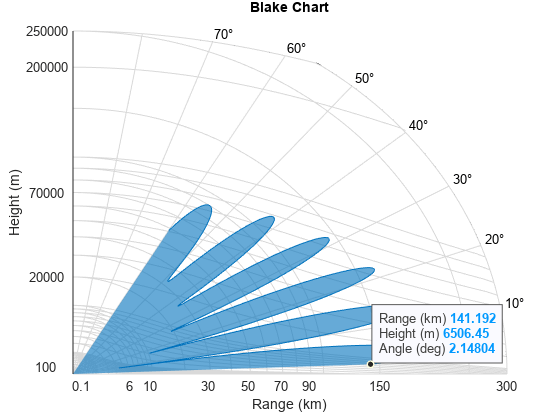blakechart
Description
blakechart(
creates a range-angle-height plot (also called a Blake chart) for a narrowband radar
antenna. This chart shows the maximum radar range as a function of target elevation. In
addition, the Blake chart displays lines of constant range and lines of constant height.
The input consists of the vertical coverage pattern vcp,vcpangles)vcp and vertical
coverage pattern angles vcpangles, both produced by radarvcd.
The range in the range-height-angle chart is the propagated range and the height is relative to the origin of the ray. It is assumed that the antenna height is less than 1000 ft (about 305 meters) above ground level. Normal atmospheric refraction is taken into account using the CRPL Exponential Reference Atmosphere Model. Scattering and ducting are assumed to be negligible.
blakechart(___, allows you to
specify additional input parameters using name-value arguments. You can specify multiple
name-value arguments in any order with any of the previous syntaxes.Name,Value)
Examples
Input Arguments
Name-Value Arguments
More About
References
[1] Blake, Lamont V. Machine Plotting of Radar Vertical-Plane Coverage Diagrams. Naval Research Laboratory Report 7098, 1970.
[2] Bean, B.R., and G.D. Thayer. "Central Radio Propagation Laboratory Exponential Reference Atmosphere." Journal of Research of the National Bureau of Standards, Section D: Radio Propagation 63D, no. 3 (November 1959): 315. https://doi.org/10.6028/jres.063D.031.
Extended Capabilities
Version History
Introduced in R2021a


